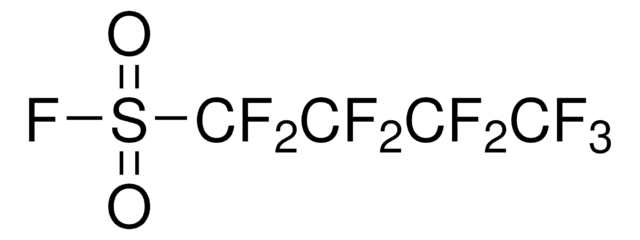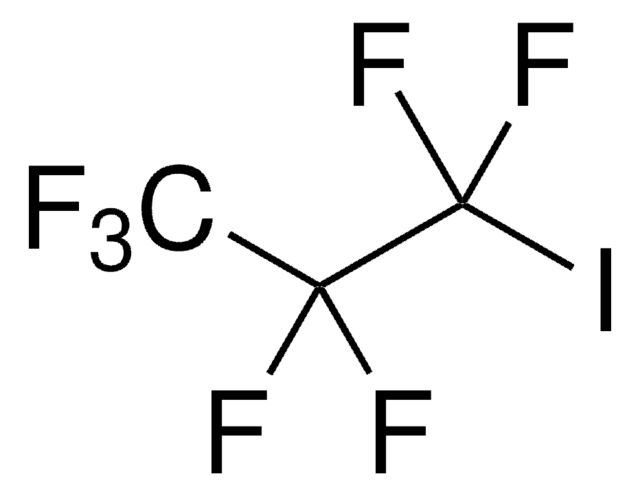Kluczowe dokumenty
343862
1-Bromoheptadecafluorooctane
99%
Synonim(y):
Heptadecafluorooctyl bromide, Perfluorooctyl bromide
Wybierz wielkość
322,00 zł
Wybierz wielkość
About This Item
322,00 zł
Polecane produkty
Poziom jakości
Próba
99%
Formularz
liquid
współczynnik refrakcji
n20/D 1.305 (lit.)
bp
142 °C (lit.)
gęstość
1.93 g/mL at 25 °C (lit.)
grupa funkcyjna
bromo
fluoro
ciąg SMILES
FC(F)(F)C(F)(F)C(F)(F)C(F)(F)C(F)(F)C(F)(F)C(F)(F)C(F)(F)Br
InChI
1S/C8BrF17/c9-7(22,23)5(18,19)3(14,15)1(10,11)2(12,13)4(16,17)6(20,21)8(24,25)26
Klucz InChI
WTWWXOGTJWMJHI-UHFFFAOYSA-N
Szukasz podobnych produktów? Odwiedź Przewodnik dotyczący porównywania produktów
Opis ogólny
Zastosowanie
Hasło ostrzegawcze
Warning
Zwroty wskazujące rodzaj zagrożenia
Zwroty wskazujące środki ostrożności
Klasyfikacja zagrożeń
Eye Irrit. 2 - Skin Irrit. 2 - STOT SE 3
Organy docelowe
Respiratory system
Kod klasy składowania
10 - Combustible liquids
Klasa zagrożenia wodnego (WGK)
WGK 3
Temperatura zapłonu (°F)
Not applicable
Temperatura zapłonu (°C)
Not applicable
Środki ochrony indywidualnej
Eyeshields, Gloves, type ABEK (EN14387) respirator filter
Wybierz jedną z najnowszych wersji:
Masz już ten produkt?
Dokumenty związane z niedawno zakupionymi produktami zostały zamieszczone w Bibliotece dokumentów.
Klienci oglądali również te produkty
Active Filters
Nasz zespół naukowców ma doświadczenie we wszystkich obszarach badań, w tym w naukach przyrodniczych, materiałoznawstwie, syntezie chemicznej, chromatografii, analityce i wielu innych dziedzinach.
Skontaktuj się z zespołem ds. pomocy technicznej











